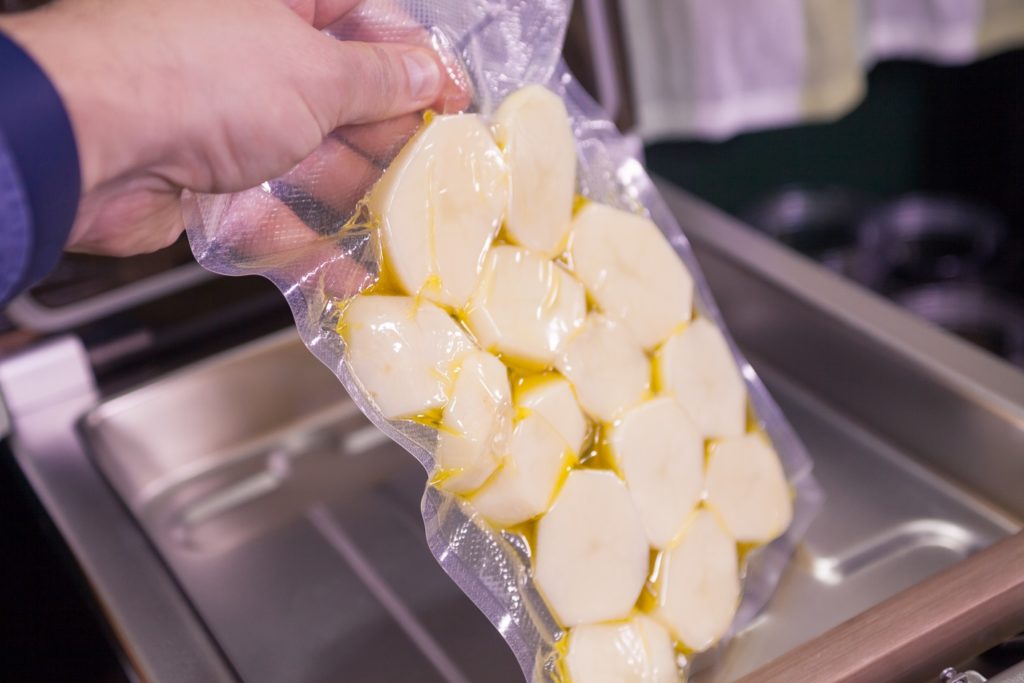WITH Brexit looming, the British food industry must remain desirable to import and export markets. However, when compared to other countries in the EU, the nation’s chilled food products have short shelf-lives. Miguel Campos, export sales manager at food packaging manufacturer Advanta, analyses what the combination of Britain’s ten-day shelf life rule and Brexit means for the food industry.
MOST British chilled food stored at 3°C to 8°C has a shelf life of ten days or less, regardless of whether it’s packaged with top film, modified atmosphere packaging (MAP) or vacuum packaging.
Compare this with Germany, where shelf lives are one to three weeks, using in-pack pasteurisation. In Australia, ready meals are on sale with a 14-day shelf life and in the United States, 60 to 90-day shelf lives are common across a range of chilled foods, using preservative strategies.
The Advisory Committee for Microbiological Safety of Food (ACMSF) published its guidance on the safety of chilled vacuum packaged and MAP in 1992. The guidelines state that, unless the food has undergone heat treatment at 90°C for ten minutes, the shelf life of chilled food must be set at a maximum of ten days.
This heat treatment is significantly harsher than basic pasteurisation, which is 70°C for two minutes. This can have negative effects on taste and texture of the food product, as well as upping the processing costs. This makes the heat treatment unsuitable for many food manufacturers, leaving many stuck to adhere to the ten-day rule.
But, why can’t the ten-day rule be extended? Concerns surround the cold-resistant bacteria, non-proteolytic Clostridium botulinum. This pathogen will only grow in the absence of oxygen, and as such, makes it a risk for food products using vacuum packaging and MAP packaging methods, unless additional control factors are used.
The UK’s food safety regulations are high for a reason — to protect the British public. However, it does pose the question on why other countries are able to use longer shelf lives for their chilled products.
Does this put Britain at a competitive disadvantage, particularly at a time when the food supply chain is so vulnerable to the effects of Brexit? Potentially. As such, the rule has since been reviewed.
The review noted the guideline was quite restrictive and was not applied in many other countries. It highlighted that over the previous 20 years, there were no reported cases of Clostridium botulism linked to properly stored chilled foods in the UK.
Since ACMSF defined the ten-day rule 27 years ago, the SUSSLE project (SUStainable Shelf-Life Extension) project has been underway. The goal of the project is to define a milder heat process and challenge the basis of the ten-day rule. The outcome of this project was the definition of the SUSSLE Process. Using a combination of varied pH, salt, water activity and preservative levels that can consistently prevent bacteria growth, shelf-life can be extended over ten days safely.
The industry still has a way to go in adopting SUSSLE methodology, but the project has highlighted the disparity between UK shelf lives and the rest of the world.
Considering cold chain temperature control has improved considerably since 1992, with increased adoption of insulating packaging materials such as aluminium, perhaps the ten-day rule needs reconsidering.
With queues of food logistic vehicles forecasted on both sides of the channel post-Brexit, food that spends time at the docks is time off its shelf-life. If Britain wants to remain a desirable place for exporting food products, manufacturers must take note of shelf life rules and question whether they need reassessing.














